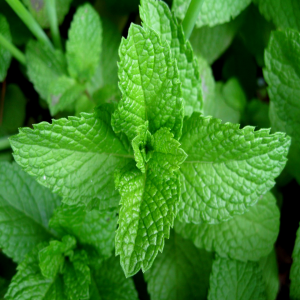Mint love!!!
August 3, 2009 on 10:46 am | In Blog, Recipes | CommentsI love mint, and there is no if’s, and’s or but’s about it. More importantly, I have found it to be the most widely used herb in Italy. After doing a lot of research I found a few cool bits of info I thought would be great to share.
The mint family, also known as Lamiaceae or Labiatae, is a large family of aromatic herbs which include the likes of basil, rosemary, sage, savory, oregano, thyme, marjoram, and lavender. I use all of these herbs with frequency, but I can’t get enough of the mints. With over 25 species and hundreds of varieties such as bergamot, chocolate, citrus, pineapple, spearmint, and nepitella just to name a few, their range of use is immeasurable. Attached below is a post by the great pastry chef Gina Depalma from Serious Eats.
Seriously Italian: Mint in Italian Cooking
Note: On Thursdays, Babbo pastry chef Gina DePalma checks in with Seriously Italian. After a stint in Rome, she’s back in the States, channeling her inner Italian spirit via recipes and intel on delicious Italian eats. Take it away, Gina!

Last week, there was some scuttle on my Twitter timeline about fresh mint. It all started when @ruthreichl tweeted something she picked up from my friend Chris Cosentino of Incanto Restaurant in San Francisco; @offalchris told her that mint was the most widely used herb in Italy. How could that be true? The consensus was that surely basil or rosemary must hold that crown.
I’m solidly with Chris on this one. Mint is indeed a universal ingredient in Italian cooking, grown and used enthusiastically by home and restaurant cooks alike, from the top to the toe of the boot.
This may be a perplexing notion for some of us, because we’ve become used to tasting mint in its most exaggerated and gargantuan form, in breath refreshers, toothpaste and chewing gum. When we aren’t swishing super-concentrated minty mouthwash, we find it blasted into chocolate candies, ice cream or frappucinos. By far, the most tragic misuse of mint is when buds are plucked and poked into desserts as a bizarre form of herbal tree-garnish, destined only to be tossed aside and gathered up with the dishes.
In reality, mint leaves have a far less concentrated flavor and subtle presence, bright, sweetly refreshing and cool. As a culinary herb, mint plays well with similarly bright notes of basil and parsley, and Italians often use it in combination with both. Mint’s bracing crispness can be used to cut the rich intensity of a meaty dish or sauce, and to sweetly compliment the acidity of tomatoes or citrus. Its coolness both tames and highlights the fire of peperoncino.
 In Italy, mint grows everywhere, wild and untamed, foraged from fields and forests by cooks and the occasional farm animal. It is also heavily planted, as ground cover to prevent erosion or decoratively among flowers and vines. When I was growing up, my mother always planted mint, no matter where we lived. In apartments, she placed mint and basil together in long window boxes, or guerilla-gardened it along the sunny side of our building. When it got too bushy, she picked it and threw it into her pesto, or into a ripe tomato salad with red onion and basil. We dried the leaves on a sunny windowsill and stored them in a sealed crock for use in the winter, to rub on lamb roasts and stir into bean soup.
In Italy, mint grows everywhere, wild and untamed, foraged from fields and forests by cooks and the occasional farm animal. It is also heavily planted, as ground cover to prevent erosion or decoratively among flowers and vines. When I was growing up, my mother always planted mint, no matter where we lived. In apartments, she placed mint and basil together in long window boxes, or guerilla-gardened it along the sunny side of our building. When it got too bushy, she picked it and threw it into her pesto, or into a ripe tomato salad with red onion and basil. We dried the leaves on a sunny windowsill and stored them in a sealed crock for use in the winter, to rub on lamb roasts and stir into bean soup.
Are you inspired to try mint in your cooking yet? Here are just a few of the ways Italian cooks like to use mint, from across Italy’s varied regions:
- In Rome, ribbons of fresh mint are used in combination with anchovy, red onion and peperoncino for Roman-style artichokes.
- In Umbria, mint is simmered into a braise, or brasato, of veal with porcini mushrooms, with more chopped fresh mint stirred in the sauce and strewn on top before serving.
- In Marche, mint spikes polenta served with lumache, or snails cooked in tomato, onions, wine, mint and other fresh herbs.
- In Piedmont, fresh mint is added to agliata—a mortar and pestle mix of garlic, olive oil, mint, basil and lemon juice. This agliata verde is mixed into fresh cheese, spread on crostini, or tossed into hot pasta.
- In Sicily, minced mint is added along with parsley and basil to caponata, and contributes color and flavor to salads with fennel, olive and blood oranges. And don’t forget my Sicilian-style Baked Cod!
- In Calabria and Basilicata, chopped mint is added to smoky, charred eggplant salad, with peperoncino, olive oil and red wine vinegar. My Calabrian mom also adds plenty of mint to her famous pickled eggplant and marinated mushrooms.
- In Tuscany, mint is used in the tomato and bread salad panzanella, tames the assertive flavor of tripe, and brightens wild rabbit and boar ragus. After dinner, it is tossed with sugar and fresh frutti di bosco, or woodland berries.
- In Venice, mint is to used flavor any number of cold seafood preparations, especially insalata di polpo, or octopus salad, and it is also added to flavor risi e pisi, or rice and peas. Mint is also used in sardine in saor, the classic Venetian preparation of sweet and sour sardines.
- In the lakes district of Lombardy, mint enhances the sweet flavor of trout and other sweet-water fish, simply sautéed and bathed with olive oil, sweet onion, fresh mint and lemon.
- In Abruzzo, mint is tossed into tiny polpettini, or meatballs, of veal, mushrooms and farro, topped with a chunky tomato sauce with more mint and fresh basil.
- In Emilia-Romagna, melons from Reggio are tossed with fresh mint and dribbled with aged balsamico. Mint is also added to a sauce of caramelized onions and a bit of cream to embellish fresh tagliatelle.
- In Friuli-Venezia Giulia, mint is combined with Montasio cheese in a sauce for polenta or fresh pasta. Mint is also stirred into side dishes, or contorni, of grains, like barley and risotto with wild mushrooms and other mountain herbs.
Besides being endlessly versatile, mint is insanely easy to grow, even for apartment dwellers. Try planting different varieties; in addition to bright green spearmint, try variegated pineapple mint, black peppermint, and orange or chocolate-scented mint. Now is the right time of year; it grows lickety-split, and you’ll have plenty of mint to harvest until the first frost.
2 Responses to “Mint love!!!”
Leave a Reply
Powered by WordPress
Entries and comments feeds.
Valid XHTML and CSS. ^Top^


 Become a Fan
Become a Fan
mint is gay
Speaking from personal experience John?